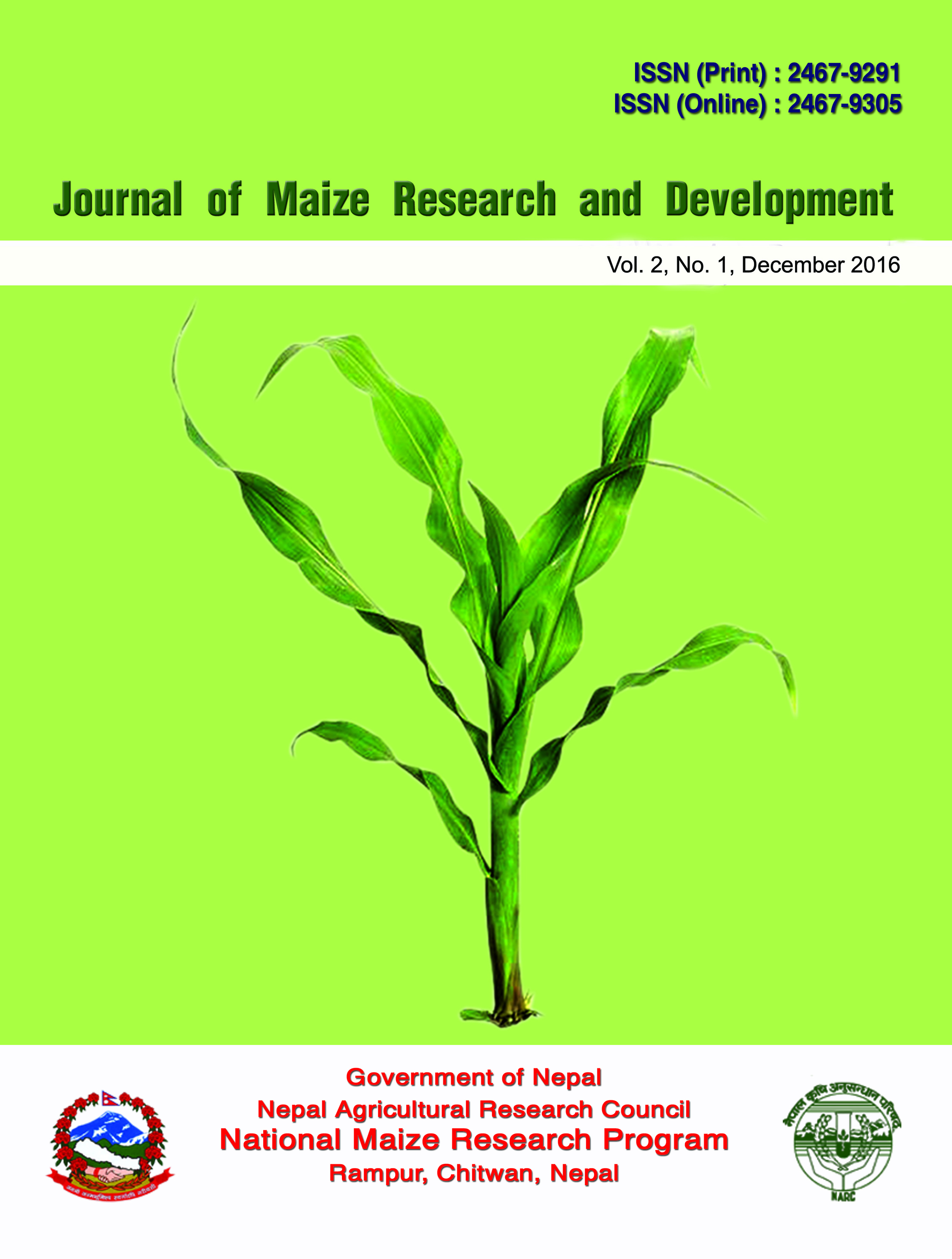Phosphorous as the major yield limiting nutrient for maize in the river basin areas of western Nepal
DOI:
https://doi.org/10.3126/jmrd.v2i1.16220Keywords:
Grain yield, maize, phosphorous, river basin, western NepalAbstract
Maize is a heavy feeder crop but not always higher quantity of chemical fertilizers leads for higher grain yield. Objective of the study was to identify the major yield limiting macro nutrient for maize in the river basis areas. Field experiments were conducted at four locations viz. Dasharathpur, Ramghat, Mehelkuna, and Gumi VDCs of Surkhet district, under research command areas of Agriculture Research Station, Surkhet. Different doses of nitrogen, phosphorous and potassium fertilizers were applied. Planting was done in the summer season of 2010 and 2011. All field experiments were laid out in randomized complete block designs with three replications at each site and year. Deuti variety of maize was used in the experiment. Days to tasseling, silking, and physiological maturity due to fertilizer application were found significant. One week earlier silking, tasseling, and physiological maturity was observed due to use of 100:100 kg ha-1 nitrogen and phosphorous as compared to the most late maturity with application of 100 kg nitrogen ha-1. The highest grain yield (6802 kg ha-1) was found with application of 100:100 kg nitrogen and phosphorous ha-1 and the lowest grain yield (4174 kg ha-1) was found with the normal recommended fertilizer dose. Phosphorous was observed as the major yield limiting factor in this study.




